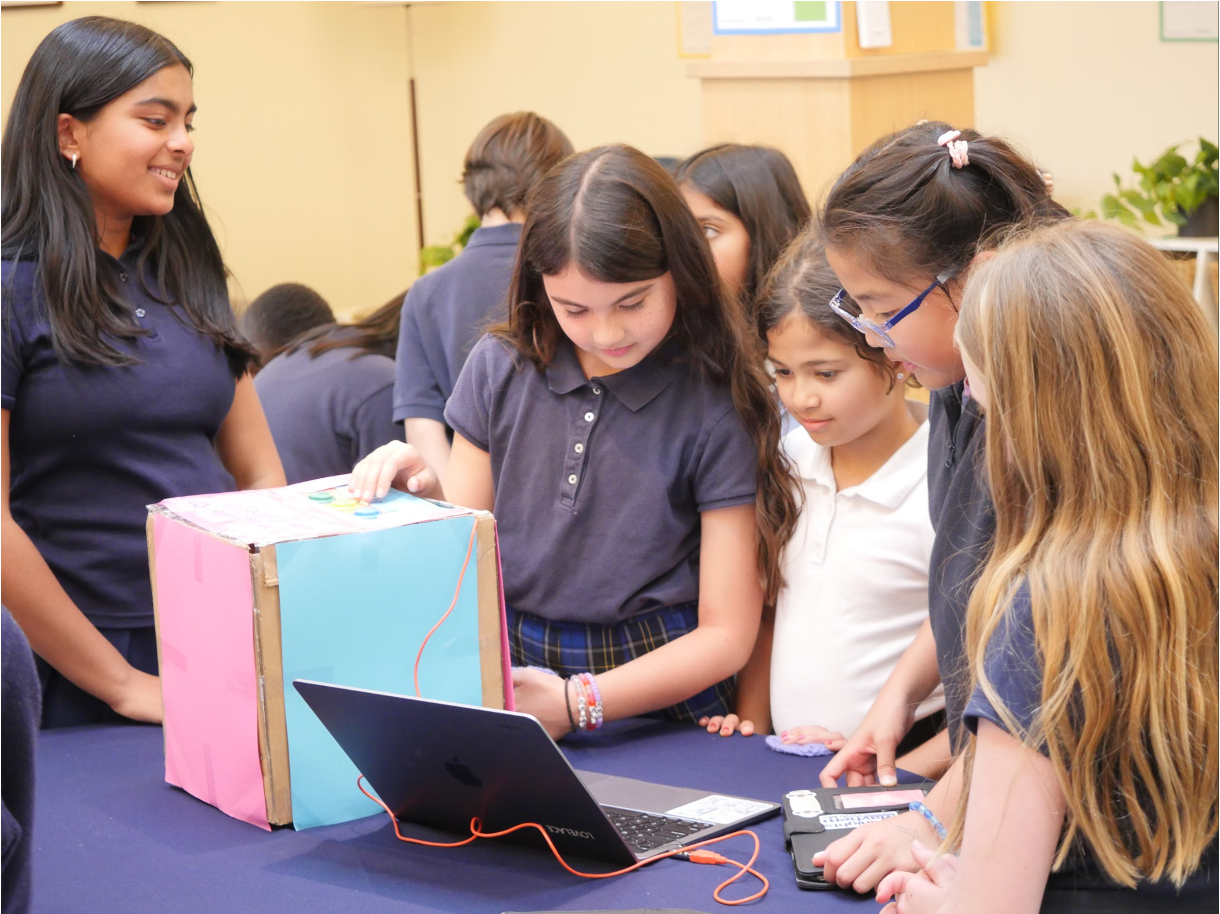“Okay, disclaimer! This game takes a long time to explain how it works.”
5th Grade designers and engineers hosted their Maker Arcade this week, inviting Lower School students to play the hand-built and coded video game systems they created in partner pairs. Over the course of this unit, students picked apart and rebuilt code in Scratch for three different kinds of video games. They learned to use Makey Makey microcontrollers to turn various objects (fruit, cardboard wrapped in foil, yourself) into input devices (think, touch this banana and hear a sound). And they dreamed in pairs about a game they could build, from art style to storyline and gameplay to physical interaction, hardware setup and instructions. “This was really hard! I hadn’t made a program before and the Makey Makey wasn’t so much making it, you know, makey.”
This was really hard! I hadn’t made a program before and the Makey Makey wasn’t so much making it, you know, makey.
Partner pairs generally divided the work into hardware and software roles, helping each other troubleshoot as they worked to overcome many challenges: “I was in charge of hardware and she was the programmer. You can’t touch the laptop to play the game; we had to build a separate controller. At first it didn’t work and [the game] was too hard. But then I made it happen a little slower. So now it’s good.”
This week, they hosted visitors from 3rd and 4th grades to come and play their games: “This one was my favorite one. It goes fast and you have to hold this part here, while pushing this to jump it. So it’s hard. But I have the high score right now.” (This was explained to me while holding what looks like a paper puppet monkey head which controls the on-screen character when you squeeze its mouth closed.) The joy was palpable, even amidst more than one game that broke and needed to be fixed during the fair. Our students were kind and curious with peers, and walked away proud of their growing coding and electrical engineering skills.

